Imagine a world where a tiny organism can control the mind of a creature many times its size. This isn’t science fiction; it’s a startling reality in the rainforests of the world. The culprit? A sinister fungus that turns ants into mindless, zombified soldiers. This fascinating yet eerie phenomenon has intrigued scientists and nature enthusiasts alike, raising questions about the complexities of life and survival strategies in nature.
The Sinister Puppet Master: Ophiocordyceps unilateralis
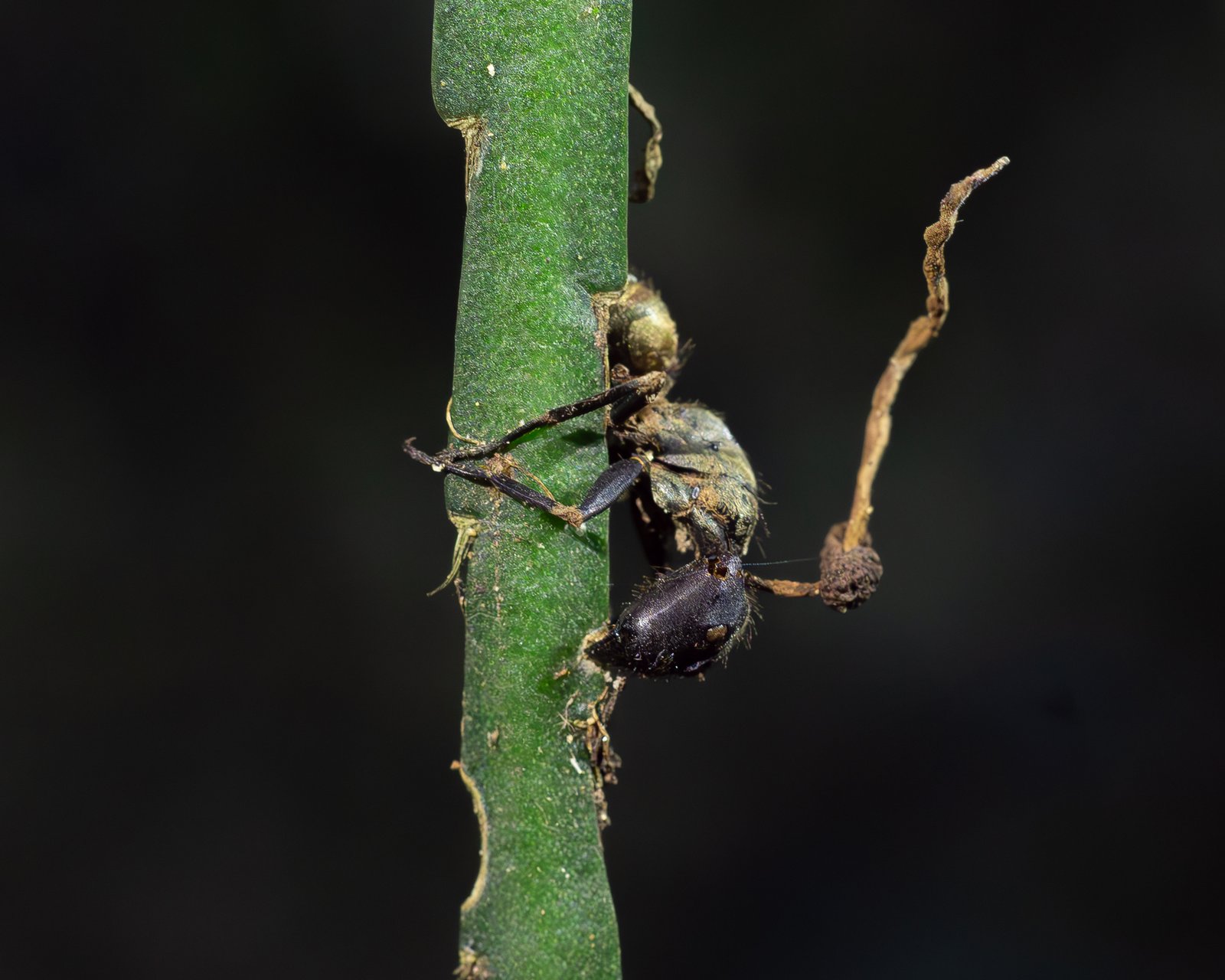
Ophiocordyceps unilateralis, or more commonly known as the “zombie-ant fungus,” is a parasitic fungus that has developed a terrifyingly effective method of ensuring its survival. This fungus infects ants, specifically the Camponotini tribe, and takes control of their bodies. Once infected, the ant becomes a mere puppet, driven by the fungus’s insidious commands. It’s a chilling example of nature’s dark side, where survival often involves tactics that seem straight out of a horror movie.
The Infection Process: How Ants Become Zombies
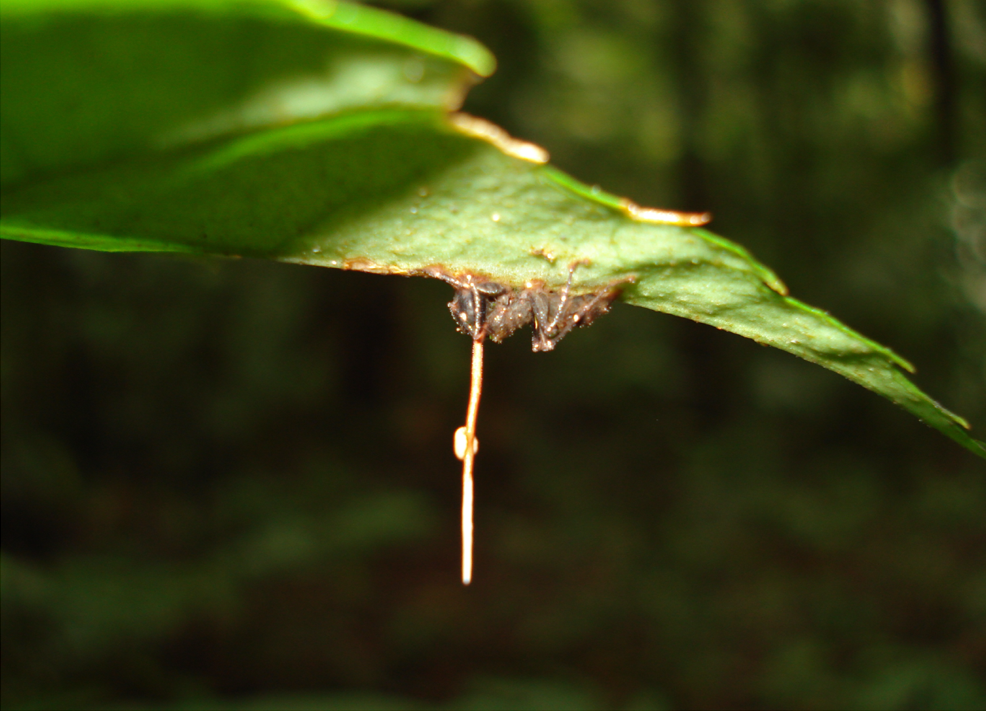
The process begins when an ant encounters fungal spores while foraging. These spores attach to the ant’s exoskeleton, eventually penetrating it and reaching the brain. The fungus releases chemicals that manipulate the ant’s central nervous system, effectively hijacking its behavior. The ant, now under the fungus’s control, leaves its colony and climbs to a location that is optimal for the fungus’s growth. This manipulation is so precise that it ensures the ant dies in a position that maximizes spore dispersal, furthering the fungus’s life cycle.
The Climb of Death: A Macabre Ritual

Once the fungus has taken control, the ant is compelled to climb vegetation, often choosing a leaf or twig about 25 centimeters off the ground. This height is not random; it provides the perfect microenvironment for the fungus to thrive. The ant then clamps onto the leaf with a death grip, a phenomenon known as the “death grip” or “lockjaw,” ensuring it remains in place even after death. This morbid ritual is a testament to the fungus’s evolutionary prowess, having fine-tuned its manipulation over thousands of years.
Fungal Growth and Spore Release: Completing the Cycle
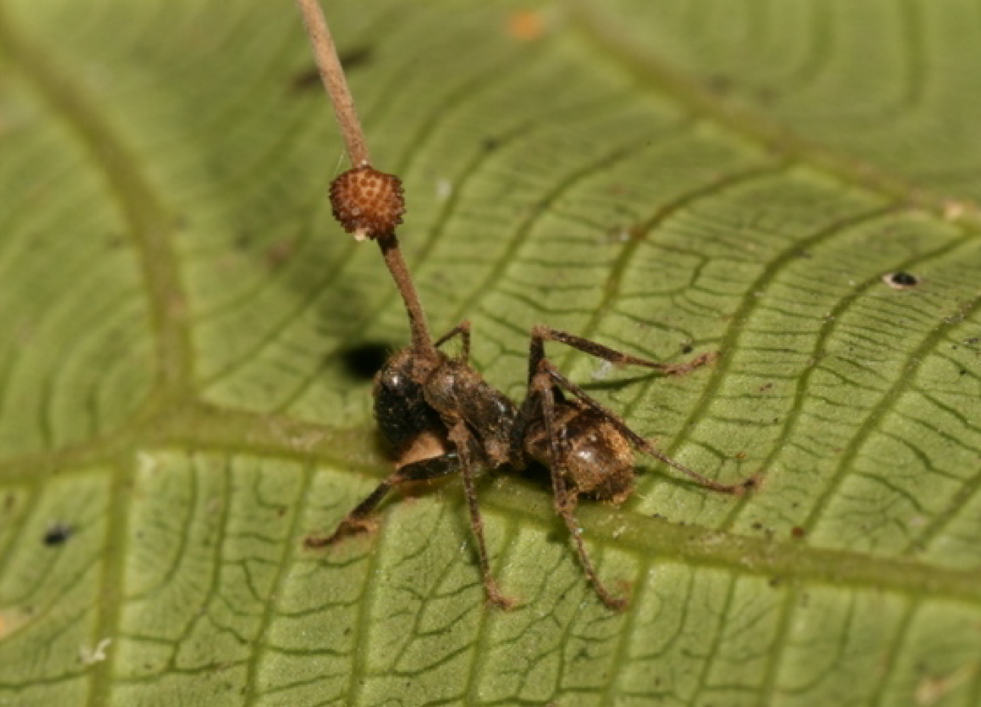
After the ant’s death, the fungus continues its sinister work. It grows a stalk-like structure from the ant’s head, which eventually bursts to release spores into the environment. These spores rain down onto the forest floor, ready to infect new victims. This cycle of infection, manipulation, and spore release ensures the fungus’s survival and propagation. It’s a chilling reminder of how life can thrive in the most unexpected ways, using strategies that challenge our understanding of nature.
The Impact on Ant Colonies: A Hidden Threat
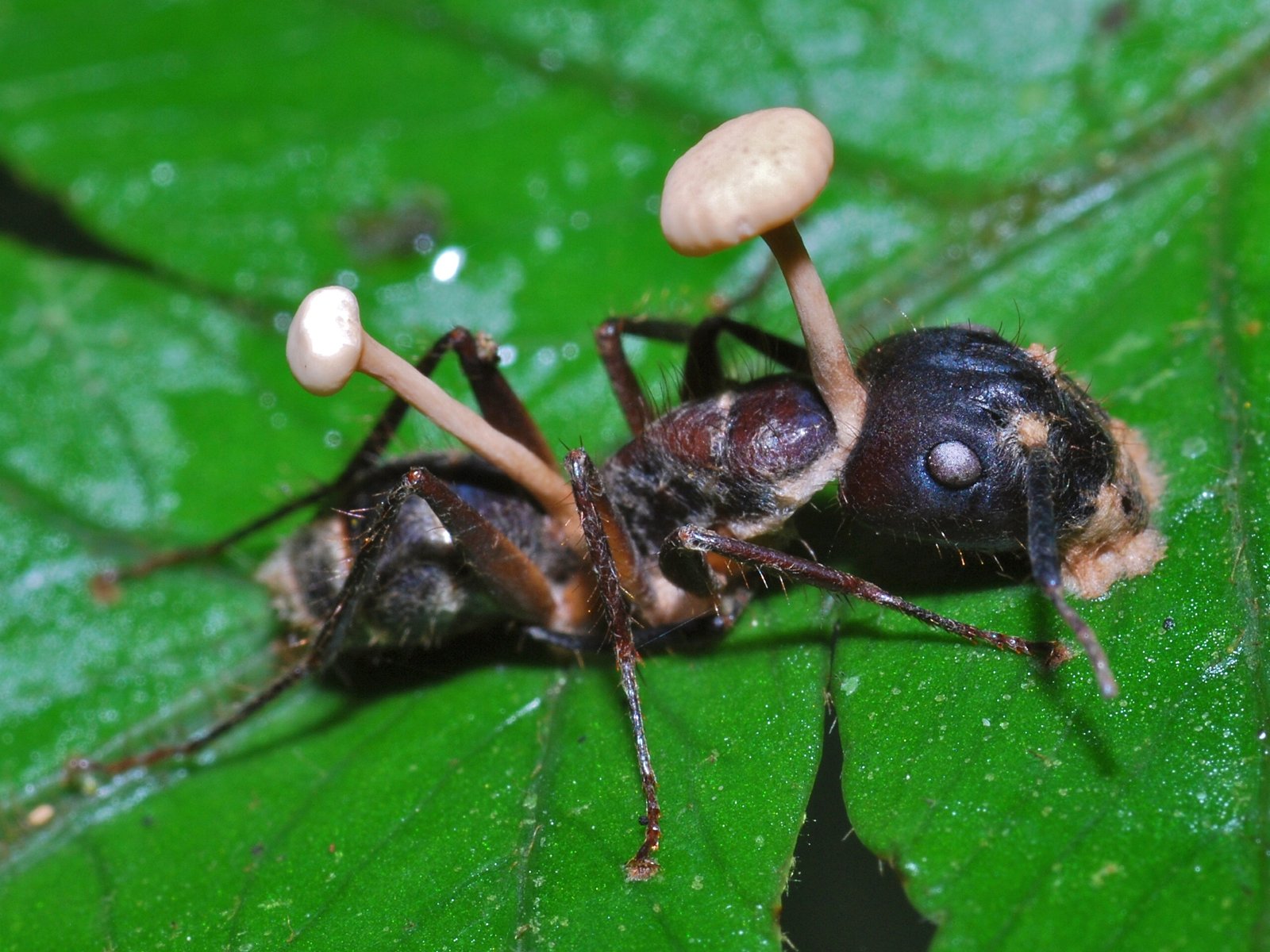
The presence of Ophiocordyceps unilateralis can have devastating effects on ant colonies. As more ants become infected and leave the colony, the social structure and functioning of the colony are disrupted. This hidden threat can lead to reduced numbers and weakened defenses, making the colony more vulnerable to other predators and environmental challenges. The fungus doesn’t just control individual ants; it can indirectly influence entire ecosystems, showcasing the complex interplay between organisms in nature.
Defensive Strategies: How Ants Fight Back
Despite the formidable threat posed by the zombie-ant fungus, ants have evolved several strategies to combat it. Some ants have developed behaviors to identify and remove infected individuals from the colony, minimizing the spread of the fungus. Others have been observed creating barriers around infected ants to contain the spores. These defensive measures highlight the ongoing evolutionary arms race between parasite and host, where each side continuously adapts to outwit the other.
Scientific Insights: Understanding Parasitic Manipulation
The study of Ophiocordyceps unilateralis provides valuable insights into parasitic manipulation and control. Scientists are keen to understand the biochemical pathways and mechanisms that allow the fungus to exert such precise control over its host. This research not only sheds light on the complexities of parasitic relationships but also has potential implications for neuroscience and the study of behavior. It raises intriguing questions about free will, control, and the boundaries of life.
Broader Implications: Lessons from the Zombie-Ant Fungus

The story of the zombie-ant fungus extends beyond its immediate biological implications. It serves as a stark reminder of the intricate and often ruthless strategies life employs to survive. This phenomenon challenges our perceptions of autonomy and control, prompting us to reconsider what it means to be alive. It also underscores the importance of biodiversity and the delicate balance of ecosystems, where even the smallest organisms can have profound impacts.
Nature’s Dark Genius: Evolutionary Mastery
The ability of Ophiocordyceps unilateralis to manipulate ants is a testament to nature’s dark genius. It highlights the power of evolution to craft survival strategies that are both awe-inspiring and terrifying. This mastery of manipulation is a reminder of the incredible complexity and adaptability of life on Earth. As we continue to explore and understand these phenomena, we gain a deeper appreciation for the wonders and mysteries of the natural world.
The Unsettling Reality: A World Beyond Imagination
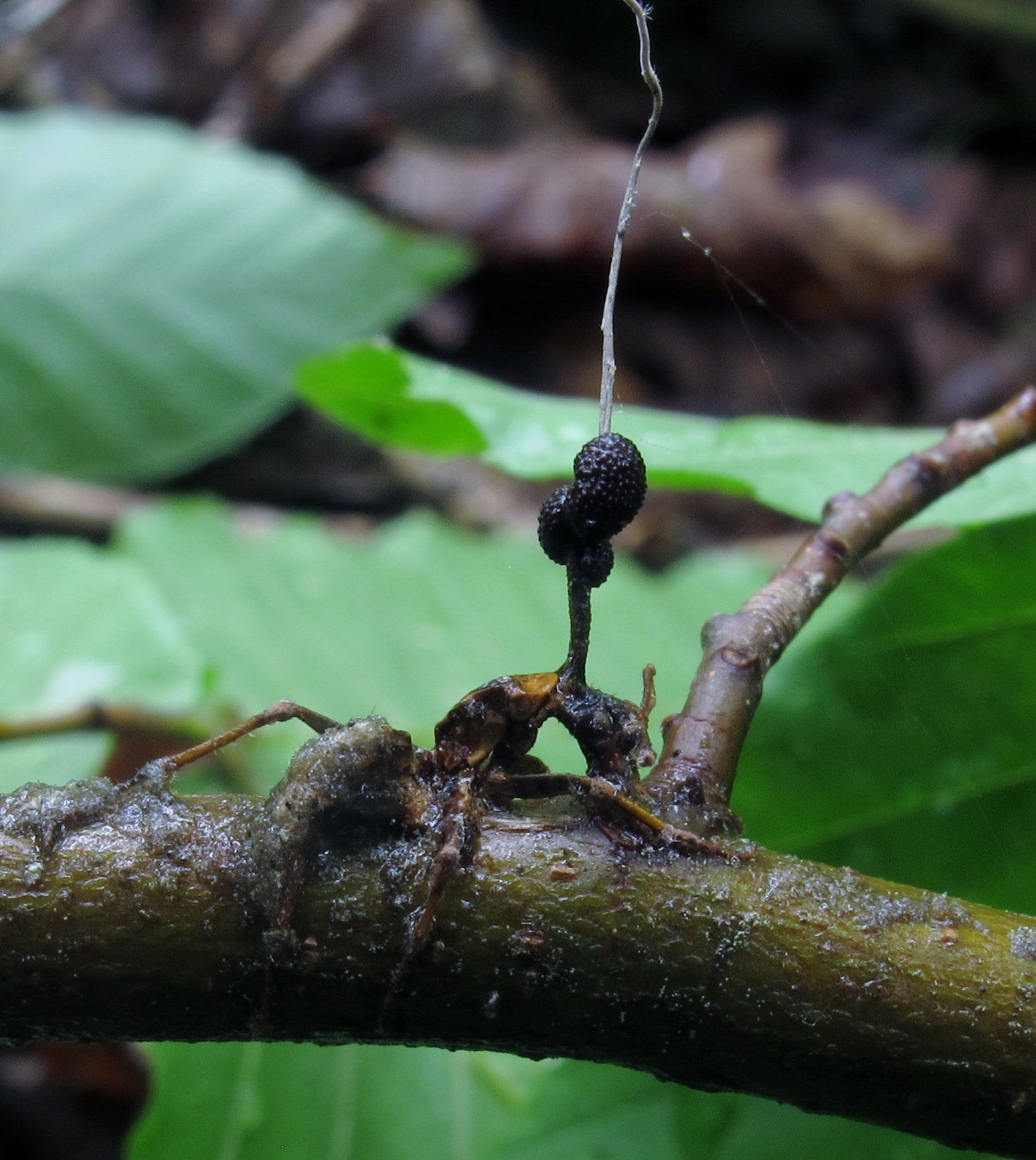
The existence of the zombie-ant fungus is a humbling reminder of the vast and often unsettling diversity of life. It challenges our understanding of autonomy, control, and survival, pushing the boundaries of what we consider possible. This eerie phenomenon invites us to question the limits of nature’s creativity and adaptability. As we ponder these questions, we are left to wonder: what other secrets does the natural world hold, waiting to be discovered?




